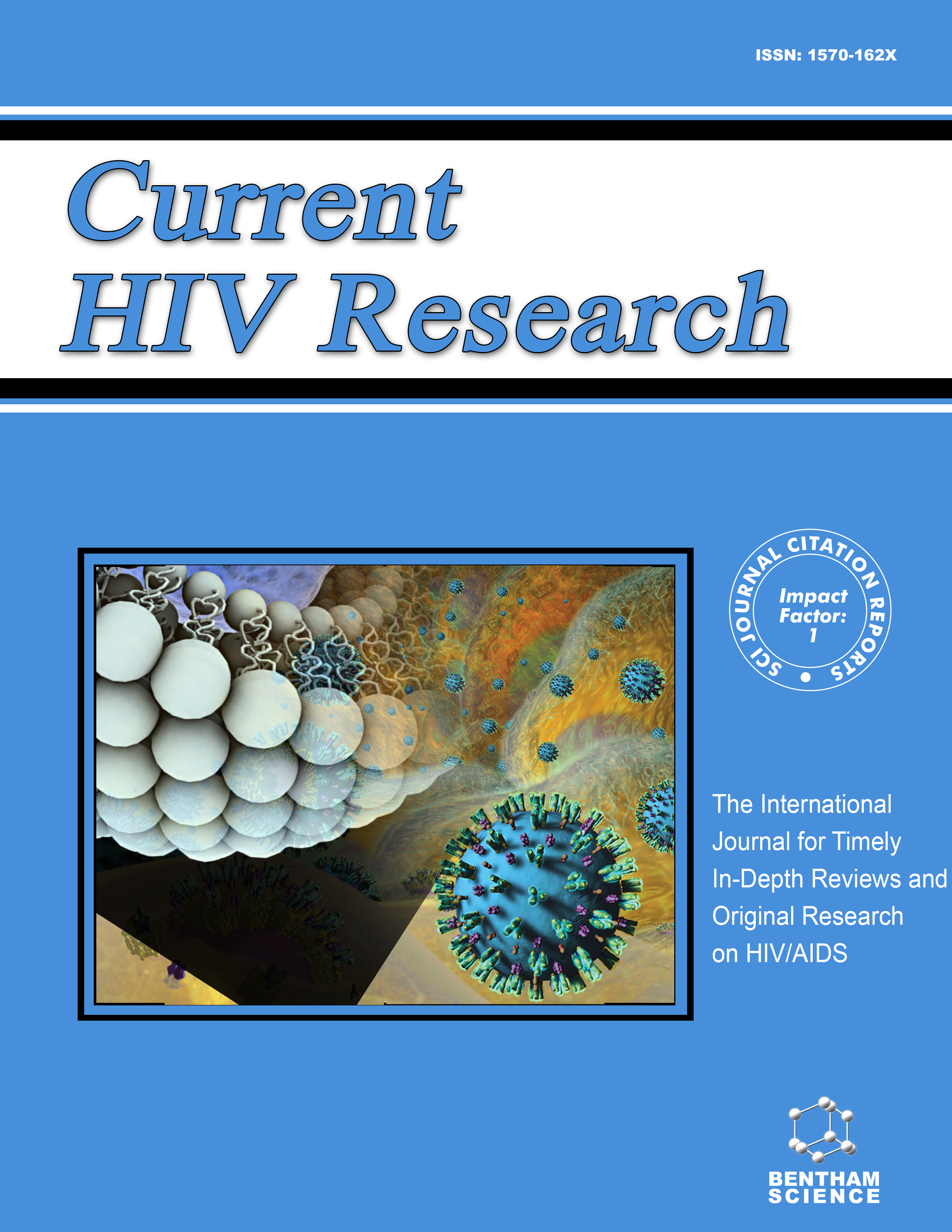- Home
- A-Z Publications
- Current HIV Research
- Previous Issues
- Volume 11, Issue 1, 2013
Current HIV Research - Volume 11, Issue 1, 2013
Volume 11, Issue 1, 2013
-
-
The Origin of Lentivirus Research: Maedi-Visna Virus
More LessMaedi and visna are contagious sheep diseases which were introduced into Iceland in 1933 by imported sheep of Karakul breed. Maedi, a slowly progressing pneumonia, and the central nervous system disease visna were shown to be transmissible in sheep and most likely caused by a virus. In 1957, visna virus was isolated in tissue culture from sheep brain and maedi virus was isolated the following year from sheep lungs. Bo Read More
-
-
-
The Role of Co-Infections in Mother-to-Child Transmission of HIV
More LessAuthors: Caroline C. King, Sascha R. Ellington and Athena P. KourtisIn HIV-infected women, co-infections that target the placenta, fetal membranes, genital tract, and breast tissue, as well as systemic maternal and infant infections, have been shown to increase the risk for mother-to-child transmission of HIV (MTCT). Active co-infection stimulates the release of cytokines and inflammatory agents that enhance HIV replication locally or systemically and increase tissue permeability, which weakens Read More
-
-
-
Histone Deacetylase Inhibitor MC1293 Induces Latent HIV-1 Reactivation by Histone Modification In Vitro Latency Cell Lines
More LessAuthors: Xiying Qu, Hao Ying, Xiaohui Wang, Chuijin Kong, Xin Zhou, Pengfei Wang and Huanzhang ZhuHIV-1 latency remains a major problem for the eradication of viruses in infected individuals. We evaluated the effect of MC1293 on the epigenetic change at HIV-1 LTR and the induction of the latent viruses in the latency Jurkat T cell line. We found MC1293 can activate HIV-1 gene expression, increase the acetylation level of H3 and H4 at the nuc-1 site of HIV-1 LTR. In addition, MC1293 can synergize with prostratin to activate t Read More
-
-
-
HIV Progression to AIDS: Bioinformatics Approach to Determining the Mechanism of Action
More LessAuthors: Norbert Nwankwo and Huseyin SekerThe mechanism by which HIV infection transforms into AIDS disease is unclear. Several factors such as the decline in immune response, increase in replication rate, Syncytium inducing capacity and ability of the viruses to infect tumour cell lines are found to be associated with HIV progression to AIDS. What has not been investigated is the role of an increase in affinity for the CD4+ T cells by the HIV-1 T cell lymphocyte-loving (T-tr Read More
-
-
-
Low-Abundance Resistant Mutations in HIV-1 Subtype C Antiretroviral Therapy-Naive Individuals as Revealed by Pyrosequencing
More LessAuthors: Sandra Gonzalez, Damien C. Tully, Clement Gondwe and Charles WoodGiven the recent scale-up of antiretroviral therapy (ART) in sub-Saharan Africa, we sought to determine how often and at what levels do drug-resistant mutant variants exist in ART-naive HIV subtype C infected individuals. Samples from 10 ART-naive Zambian individuals were subjected to ultra-deep pyrosequencing (UDPS) to characterize the frequency of low-abundance drug resistance mutations in the pol gene. Low-abun Read More
-
-
-
IL28B Polymorphism, Blood Interferon-Alpha Concentration, and Disease Stage of HCV Mono-Infected and HCV-HIV Co-Infected Patients
More LessInterferon (IFN) preactivation, interleukin-28B (IL28B) alleles, and liver fibrosis act as predictors of response to antiviral therapy against hepatitis C. We aimed to verify if blood IFN concentration, a putative biomarker of interferon preactivation, might depend on carriage of a given IL28B genotype and/or advanced hepatic fibrosis. The study population included 187 hepatitis C patients (75 of whom were HIV coinfected), w Read More
-
-
-
An Effective Vaccination Approach Augments Anti-HIV Systemic and Vaginal Immunity in Mice with Decreased HIV-1 Susceptible α4β7high CD4+ T Cells
More LessAuthors: Wei Zhu, Guoping Shi, Haijun Tang, Dorothy E. Lewis and Xiao-Tong SongHIV-1 preferentially infects activated CD4+ T cells expressing α4β7 integrin and conventional vaccination approaches non-selectively induce immune responses including α4β7high CD4+ T cells, suggesting that current candidate AIDS vaccines may produce more target cells for HIV-1 and paradoxically enhance HIV-1 infection. Thus it remains a challenge to selectively induce robust anti-HIV immunity without the unwanted Read More
-
-
-
The Beneficial Role of Vitamin D in Human Immunodeficiency Virus Infection
More LessAuthors: Khanh vinh quoc Luong and Lan Thi Hoang NguyenPatients with human immuno-deficiency virus (HIV)-infection have a high prevalence of abnormal bone metabolism and vitamin D deficiency. Vitamin D treatment has some benefit in patients with HIV infection. In this paper, we review the evidence for an association between vitamin D and HIV infection. Literature search was done from Medline. Genetic studies have provided the opportunity to determine which proteins Read More
-
Volumes & issues
-
Volume 23 (2025)
-
Volume 22 (2024)
-
Volume 21 (2023)
-
Volume 20 (2022)
-
Volume 19 (2021)
-
Volume 18 (2020)
-
Volume 17 (2019)
-
Volume 16 (2018)
-
Volume 15 (2017)
-
Volume 14 (2016)
-
Volume 13 (2015)
-
Volume 12 (2014)
-
Volume 11 (2013)
-
Volume 10 (2012)
-
Volume 9 (2011)
-
Volume 8 (2010)
-
Volume 7 (2009)
-
Volume 6 (2008)
-
Volume 5 (2007)
-
Volume 4 (2006)
-
Volume 3 (2005)
-
Volume 2 (2004)
-
Volume 1 (2003)
Most Read This Month
Article
content/journals/chr
Journal
10
5
false
en


